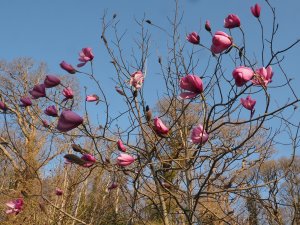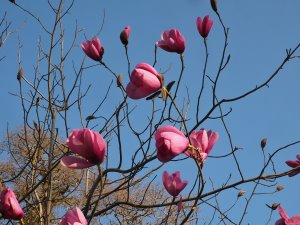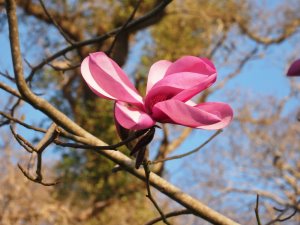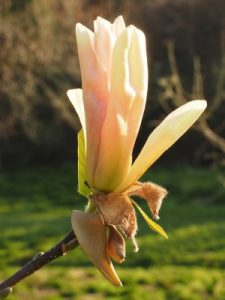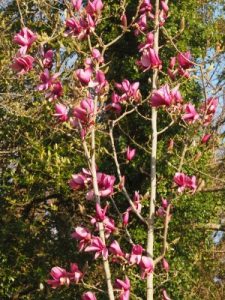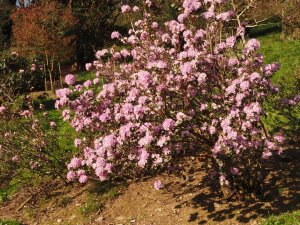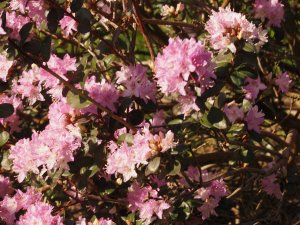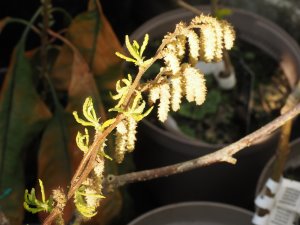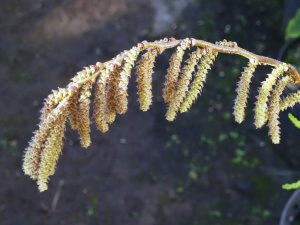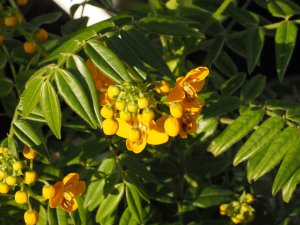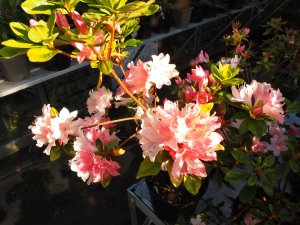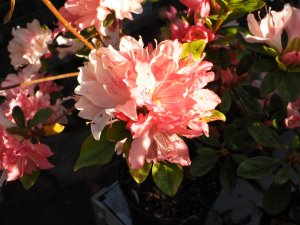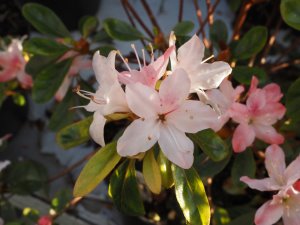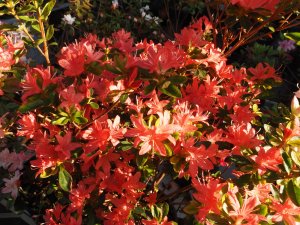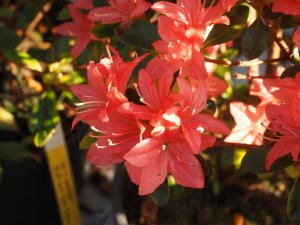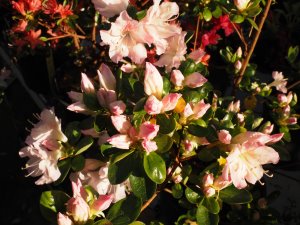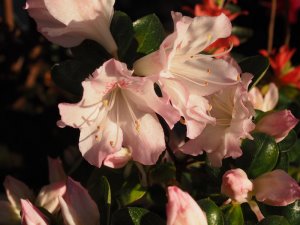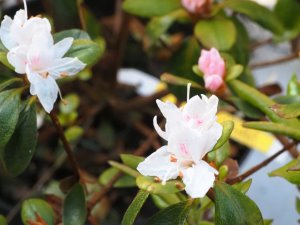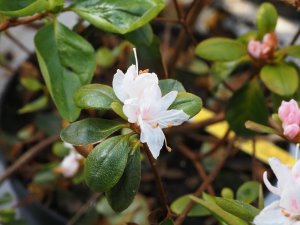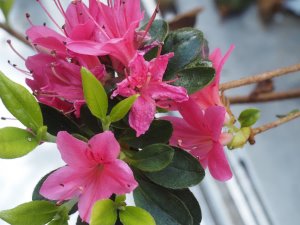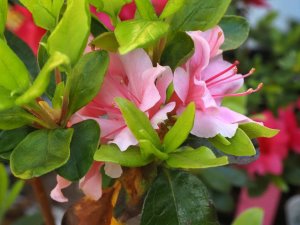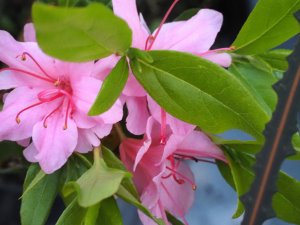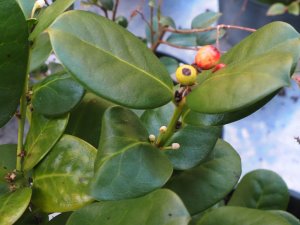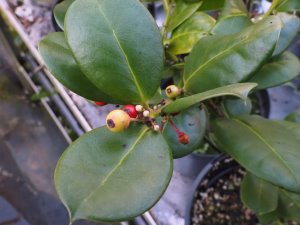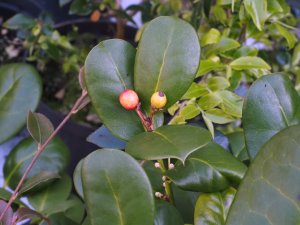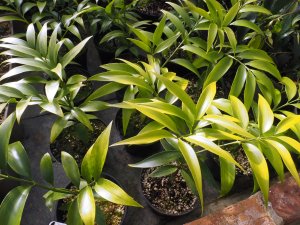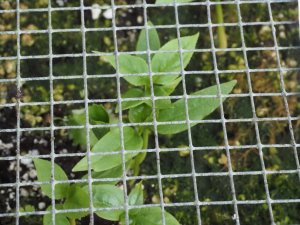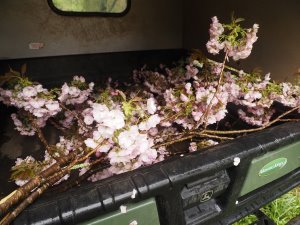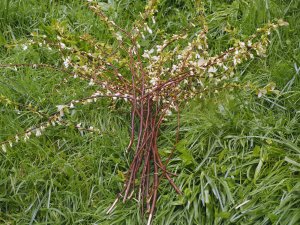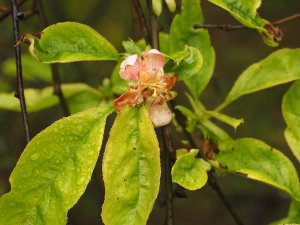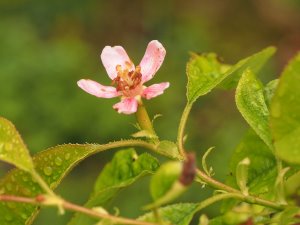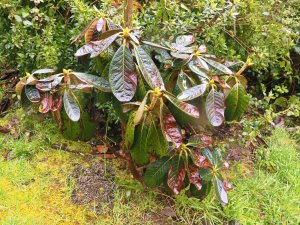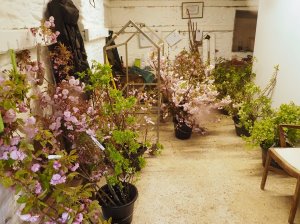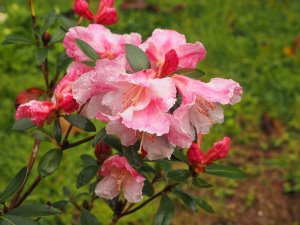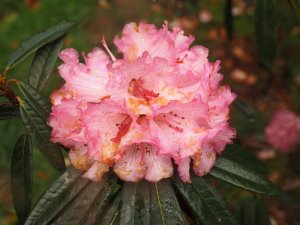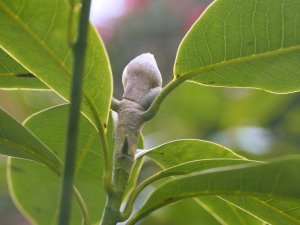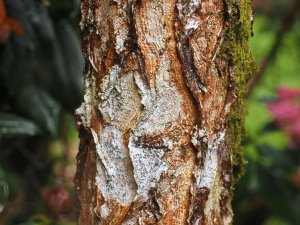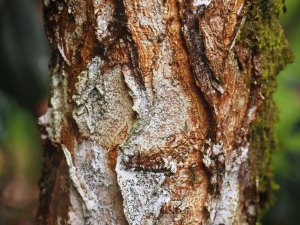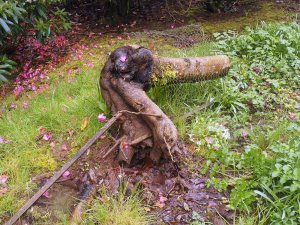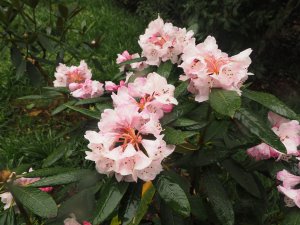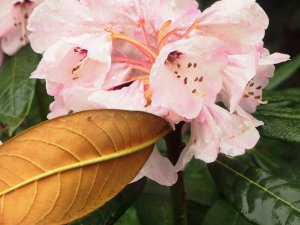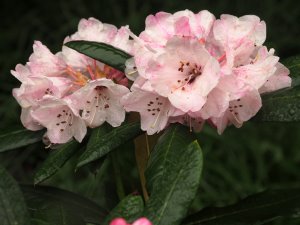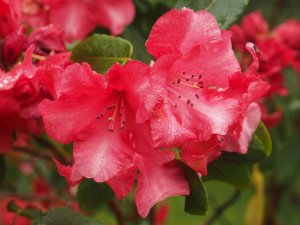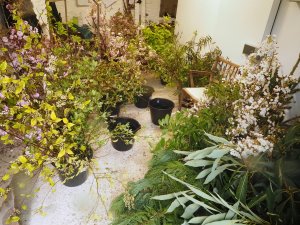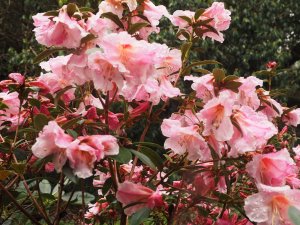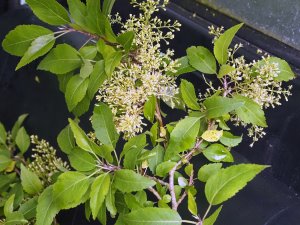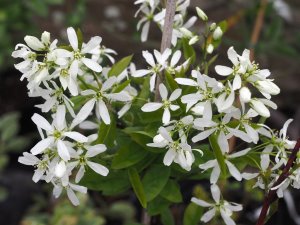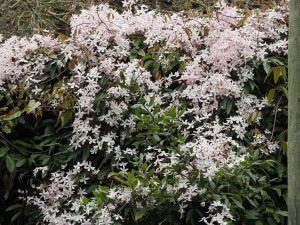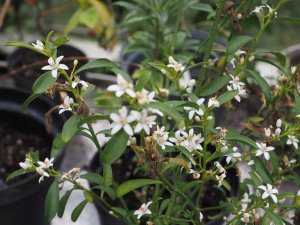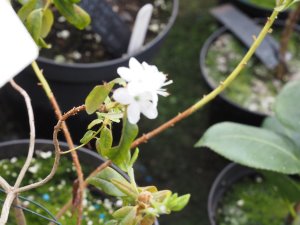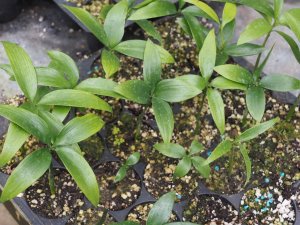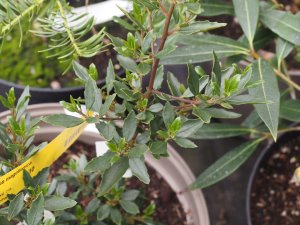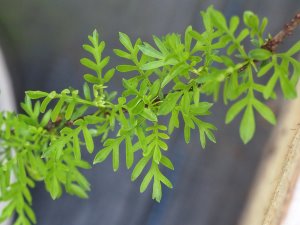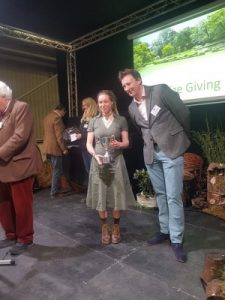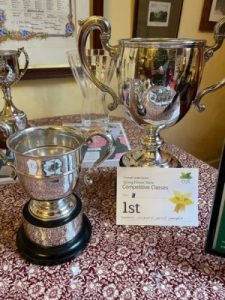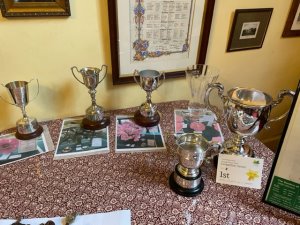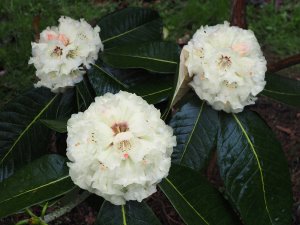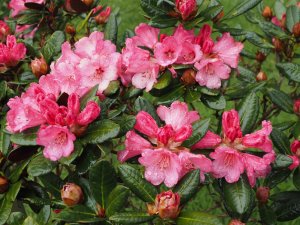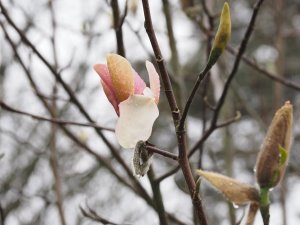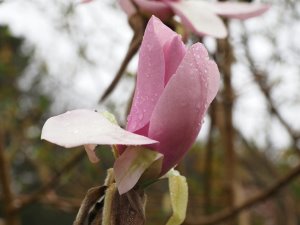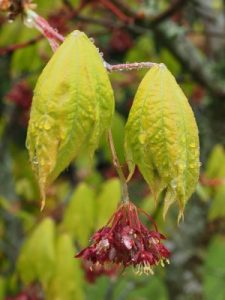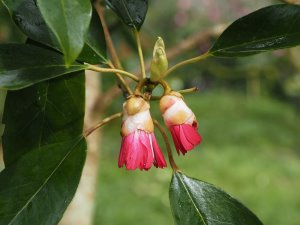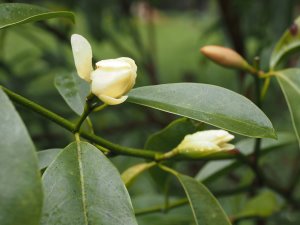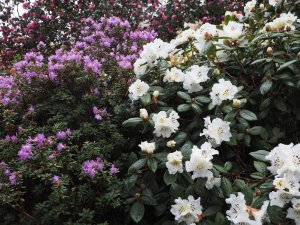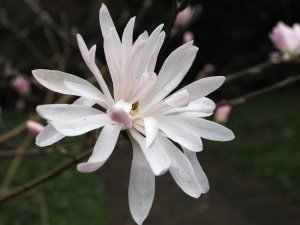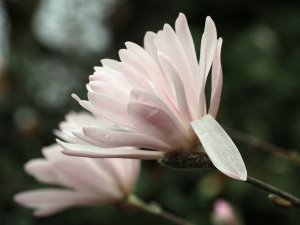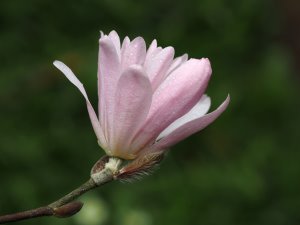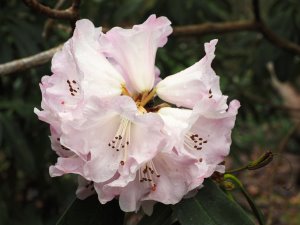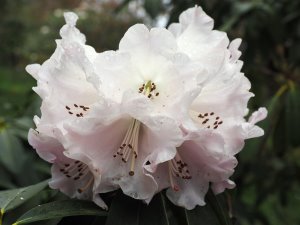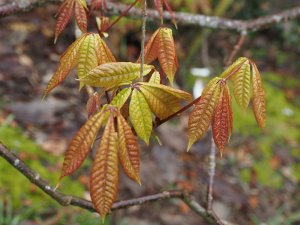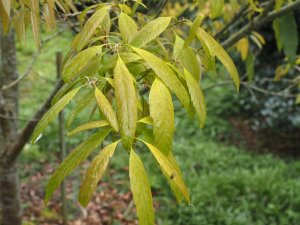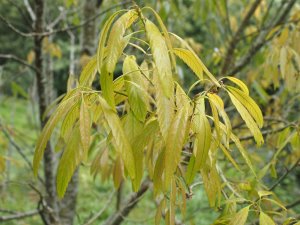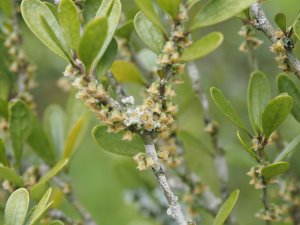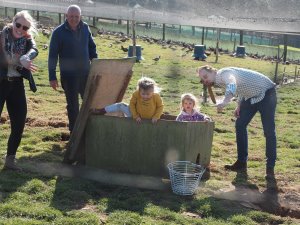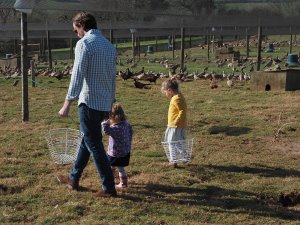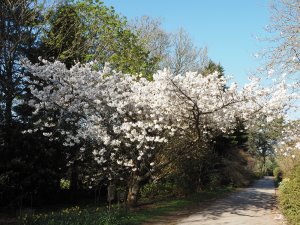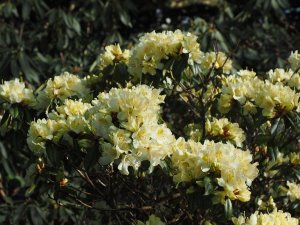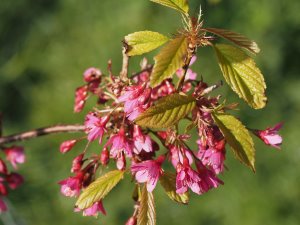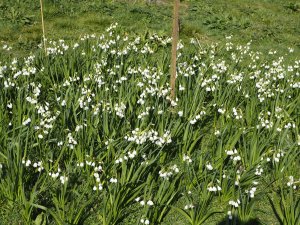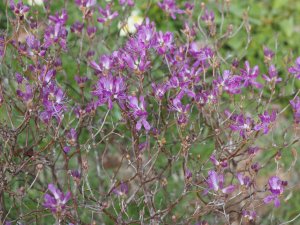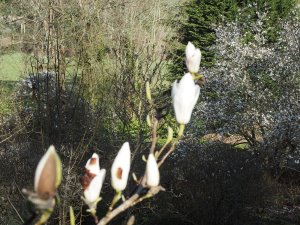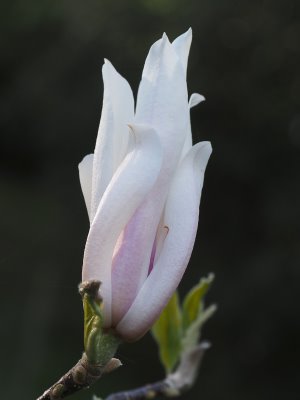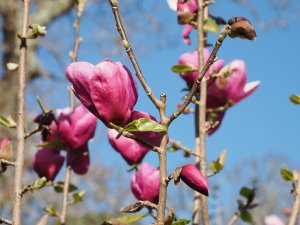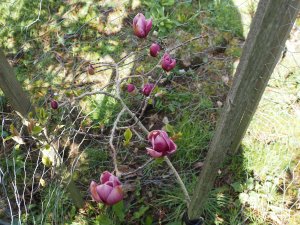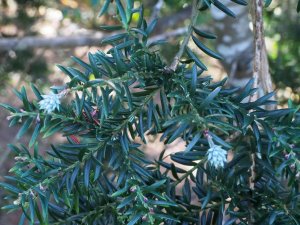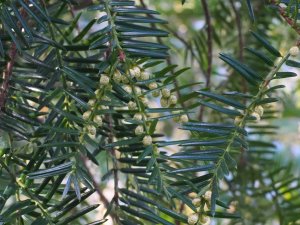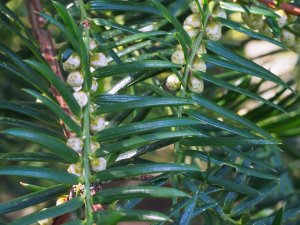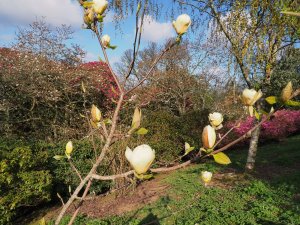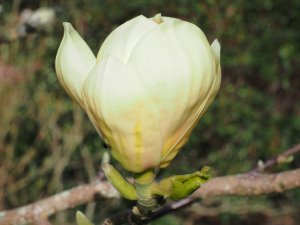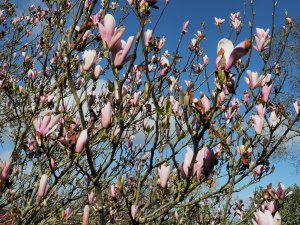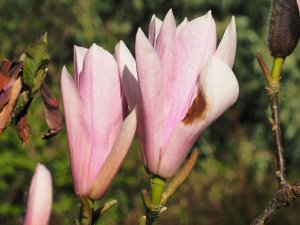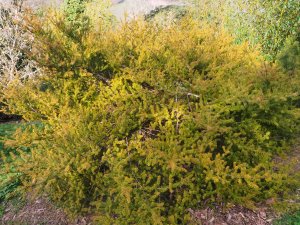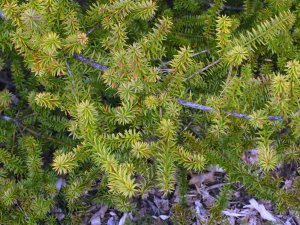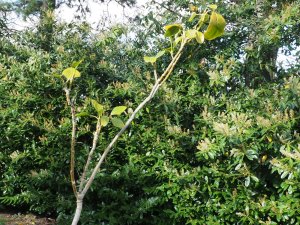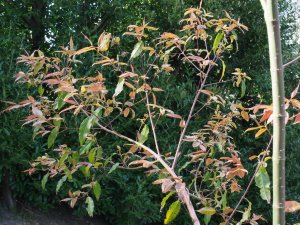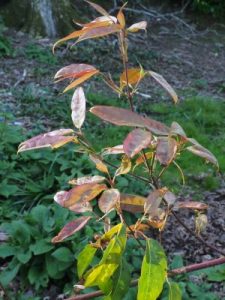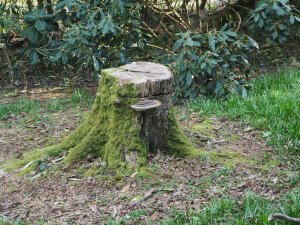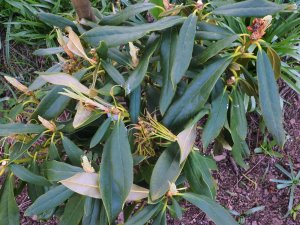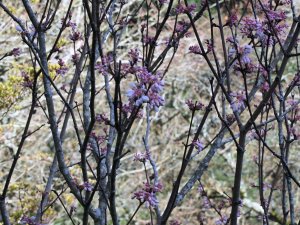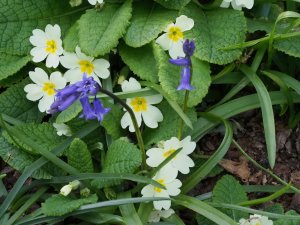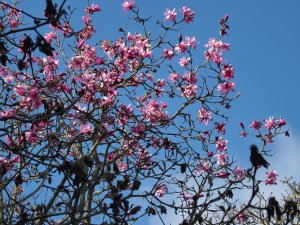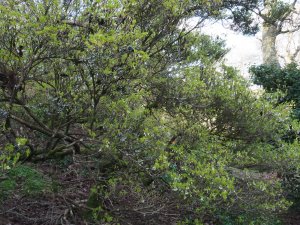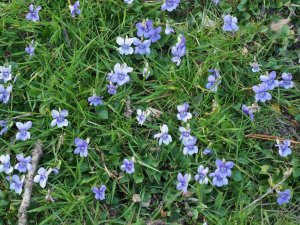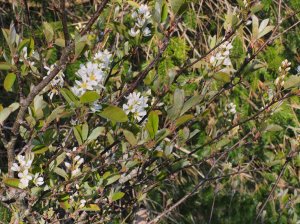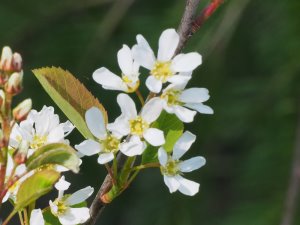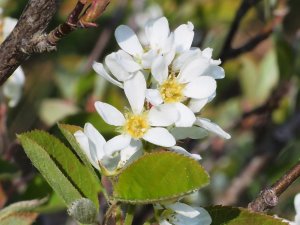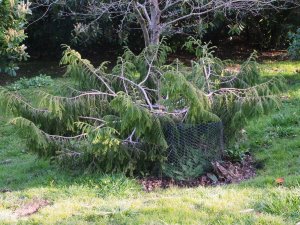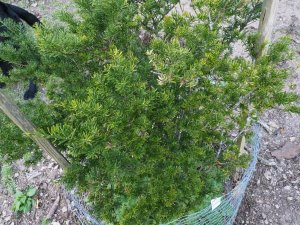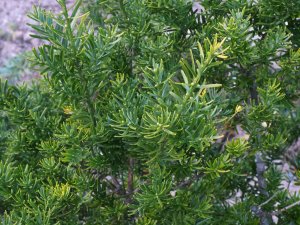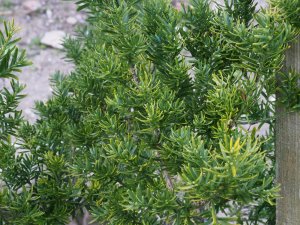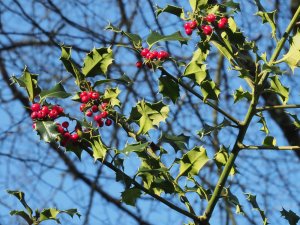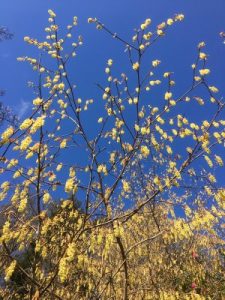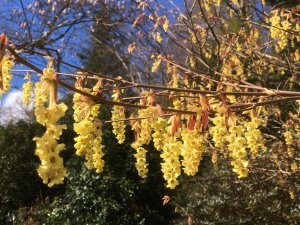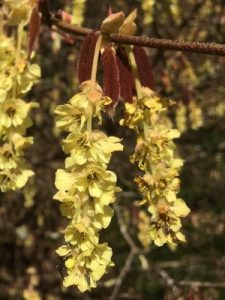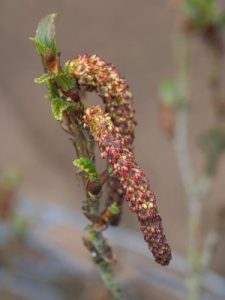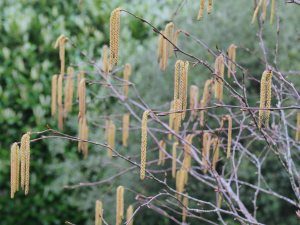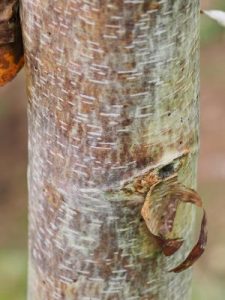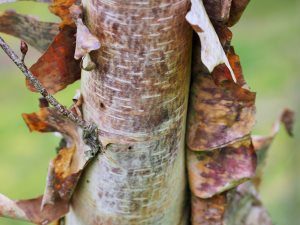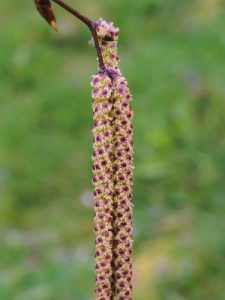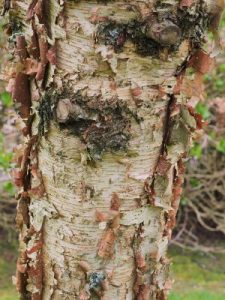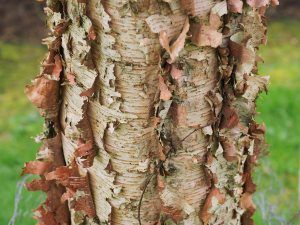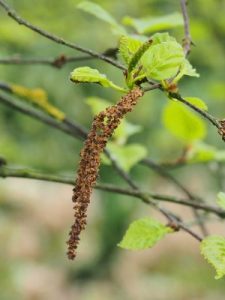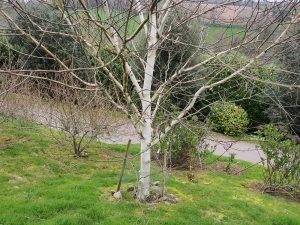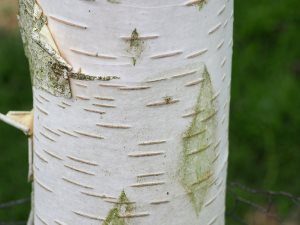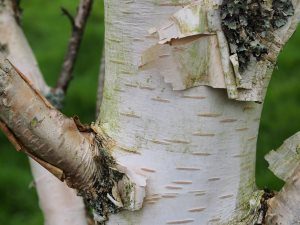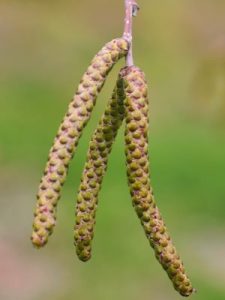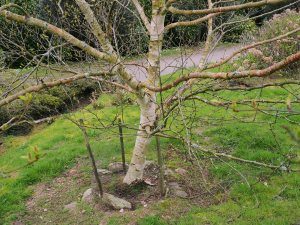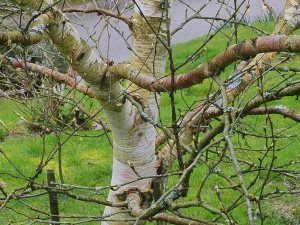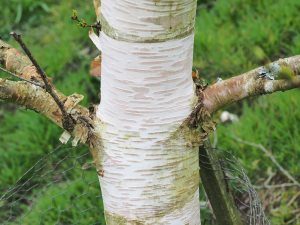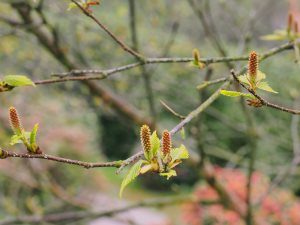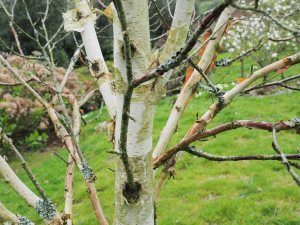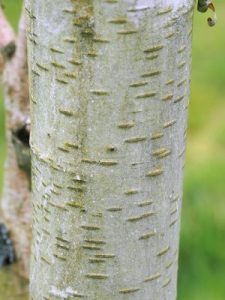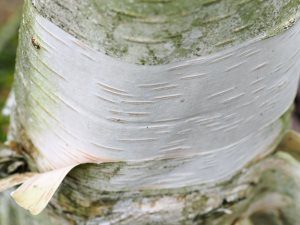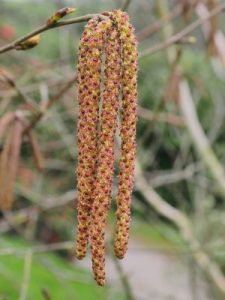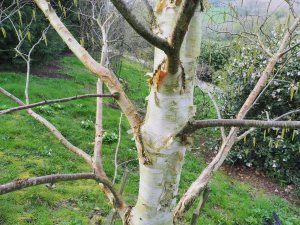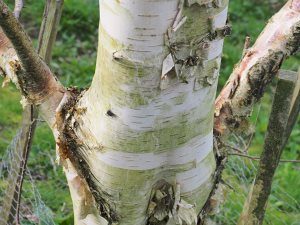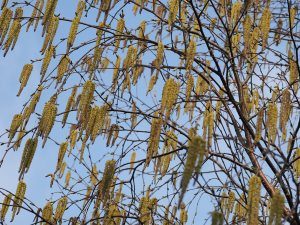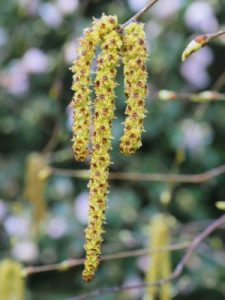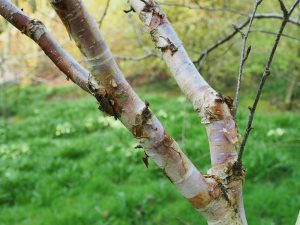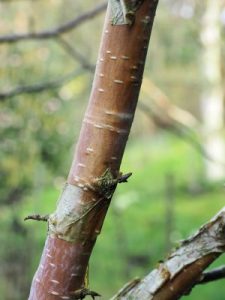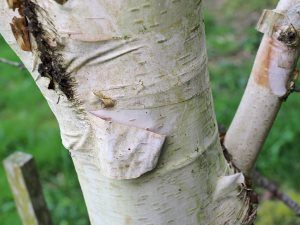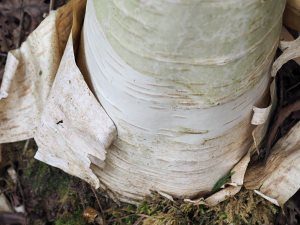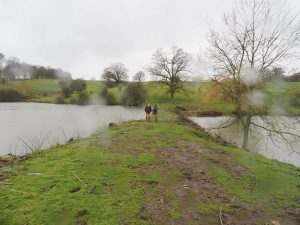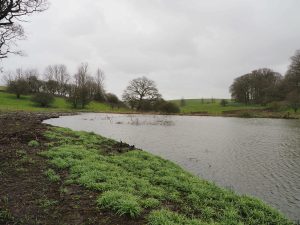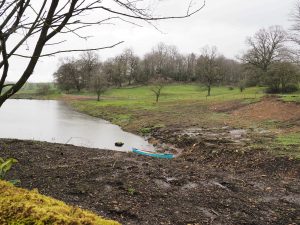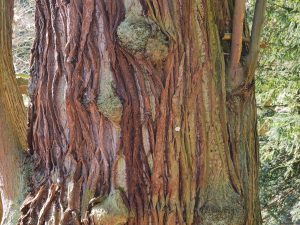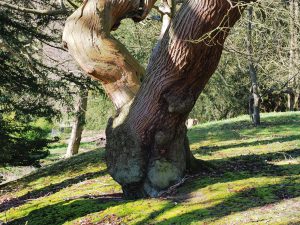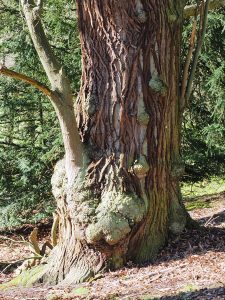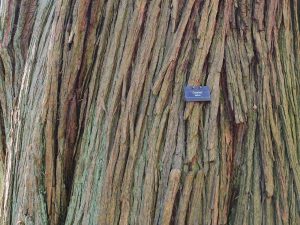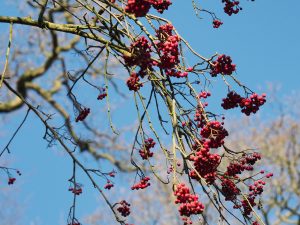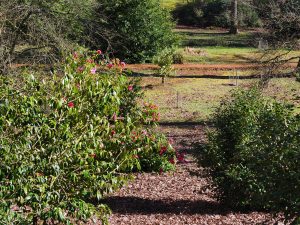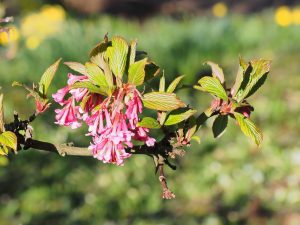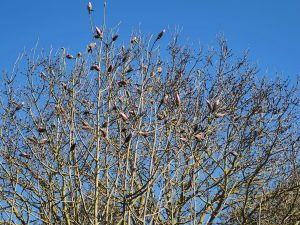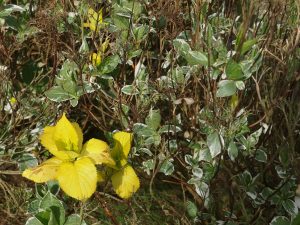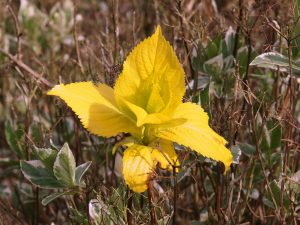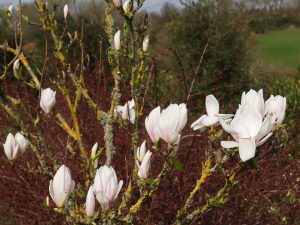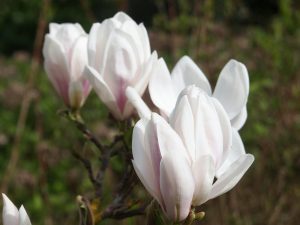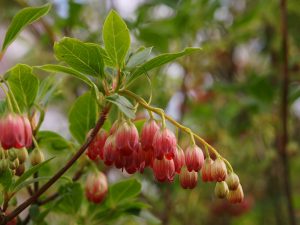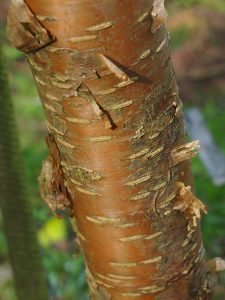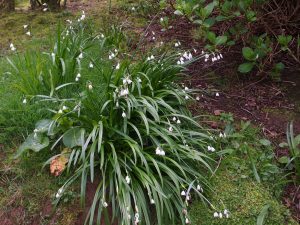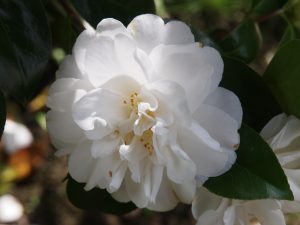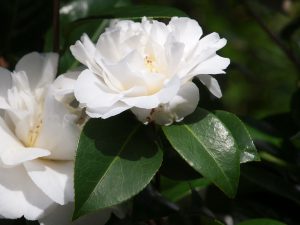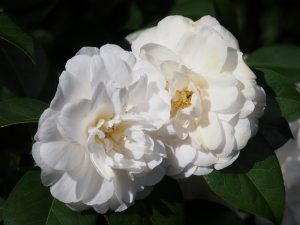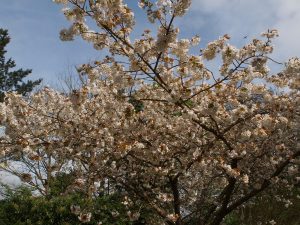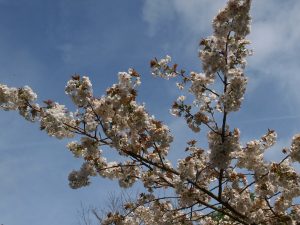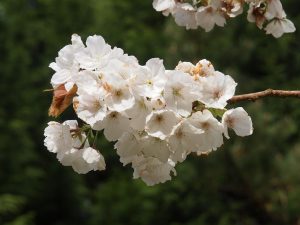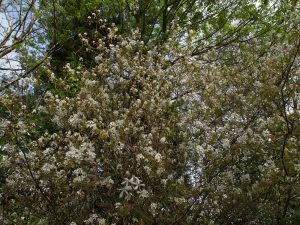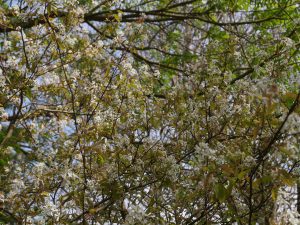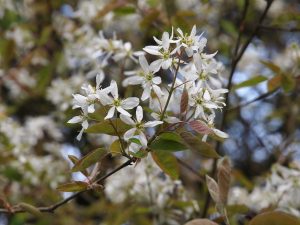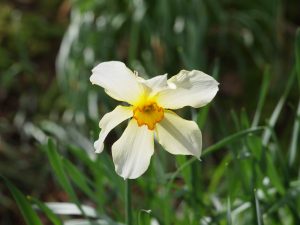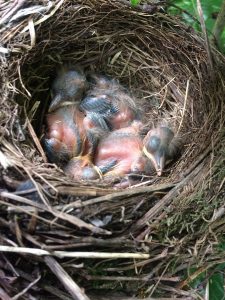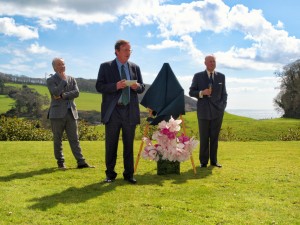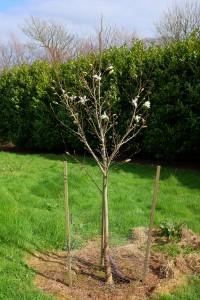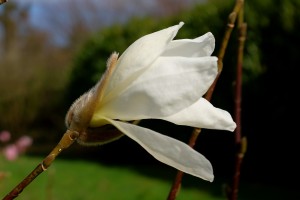2025 – CHW
Magnolia kobus ‘Isis’ opposite the Old Dog Kennels. I have been hunting this one for days for the new book.
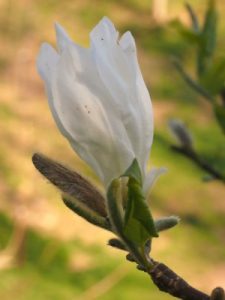
2024 – CHW
Typically it’s raining again with high winds for the weekend. Not good news for the Spring Show at Wadebridge or for our wedding event in a tent in Beach Meadow; both over the weekend. Visitor numbers for the 4 days of Easter were only 600. As our marketing team have said – we are doing everything right but this long risk of terrible weather is costing a fortune and turning everything we try to do into loss leaders. All very depressing after the garden team have spent 4 days preparing for the show. At the showground the teepees beside the main shed have already had to be moved due to high winds earlier in the week.
A day spent cutting and staging at the show with a few photographs of good and bad things on the way.
Prunus ‘Pink Perfection’ cut on Bond Street. A rather forgotten tree but just right for cutting today.
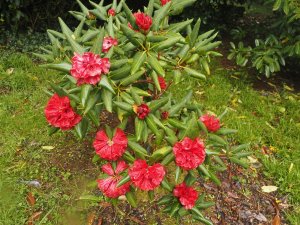
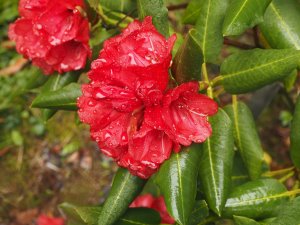
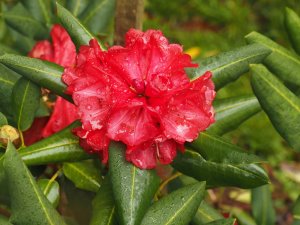
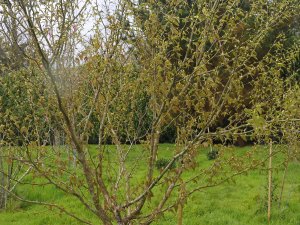
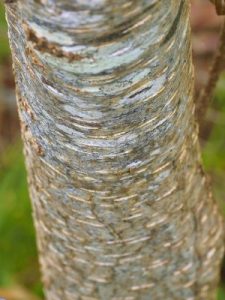
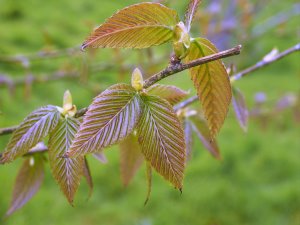
2023 – CHW
A trip to the greenhouse on this much drier week to see what is new. Tremendous amounts of newly potted cuttings and seedlings. A wonderful sight of productivity by Asia with many first time successes.
First flowering of Magnolia ‘Romina’s Pink’ in the frames. (M. x soulangeana ‘Rustica Rubra’ x M. ‘Iolanthe’). Not yet a representative flower or a decent one when I check the reference books.
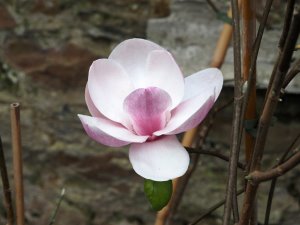
2022 – CHW
Camellia japonica ‘Maiden’s Blush’ outside the front gate under the M. dawsoniana.
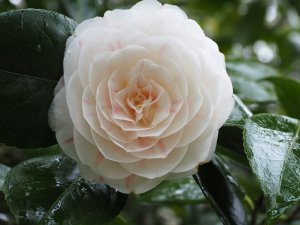
A nasty flip back to cold east winds today but still a few new magnolias flowering.The grandchildren picking pheasant eggs in the laying pens yesterday. Easter eggs for all! The first batch will go into the incubator next Friday. We all picked 300 eggs at 4pm and 600 were picked at midday.
So I have been reading all week speculation in the media about how many people in the country have already had the corona. The clear implication is that people who have it without dying or visiting the beloved NHS have not noticed that they have ‘had it’. Whether one in forty infected overall in the country is even faintly accurate, as the newspapers suggest, we have no idea.If it is the ‘herd immunity’ approach, as in Sweden and Norway, then they may have a thing or two to tell the UK. It may even be part of the original government plans as they so unwisely (media wise) unwittingly told the nation nine days ago.At the moment it is all about tests or the lack of them. BBC bleating from the safety of their very well paid sofas on Zoom at home of course.If you have actually had the corona then I am pretty sure most of you would have actually noticed being ill? Why do you need a bloody test to prove it, and your then supposed, immunity? Bugger off back to work and no more excuses – but we must have a test!If you track the BCC (early morning especially) you can follow the reality of an INDUCED and DELIBERATE panic. Each day there is another ‘reasonable’ demand on the government which, when satisfied, then moves on to another supposed outrage.In a war the media should be controlled even if the government is wrong, makes mistakes, gets overtired and is fallible in its judgement/decisions.So the Germans (we are told) do ‘testing’ so much better than us? They have generally started wars well but ended up rather less well!Yes we will get ‘tests’ (of two sorts) eventually but what will they tell us other than the bloody obvious? I refer you back to yesterday’s missive about the NHS staff and local hospitals at present. Much bullshit and little common sense here! Go back please too to the Spectator article about death recording as well which was featured in this diary.I rest a case which may be as wrong as Neil Ferguson’s advice to the government during the 2001 foot and mouth epidemic. Foot and Mouth Disease 2001 Inquiry ReportI wonder when we will see the first house martin back here?Saxegothaea conspicua with fruits just starting to form.
Podocarpus acutifolius has a good orange-yellow glow even before the new growth appears. This is becoming a huge spreading shrub.
Another near failure with a tender new plant. Dendropanax japonicus has only a few leaves left. I put it in too cold a place!
A young Acer erianthrum is early into leaf with coppery new growth.
The sad stump of the last Quercus x ludoviciana growing here which succumbed to Phytophthora a few years ago.
COVID has created more time to deadhead young rhododendrons to stop them seeding. Too early in the year really for this job now but I find a white form of Rhododendron nobleanum to deal with as here. Newly planted.
Staphylea holocarpa ‘Innocence’ just coming out above Bond Street.
The first full out bluebell I have seen with true blue colours.
In the old Hardy & Bert’s nursery (former gardeners) I find a Magnolia sprengeri ‘Diva’ seedling still full out in the sun which is invisible from the drive below.
And another elderly clump of Enkianthus perulatus by Hardy & Bert’s.
Masses of violets on Sinogrande Walk.
Amelanchier sanguinea which I had not seen in flower before. Not yet very vigorous.
A larger Taiwania cryptomerioides than the one we looked at recently. Spreading habit with no obvious leader as yet.
I think this is Pseudotaxus chienii which is a shrub with yew like leaves and, one day, white berries if we are lucky.
Corylopsis willmottiae (now sinensis) ‘Spring Purple’ (because of its new leaves) looking splendid in the sun.
2019 – CHW
So now a viewing of more of the Betula species and varieties which we have quietly assembled in the last 10 years or so.
Betula ashburneri with its first catkins. A gift from Stone Lane Gardens and their national collection of Betula.
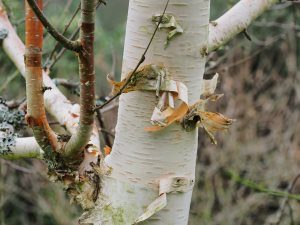
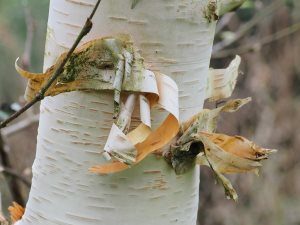
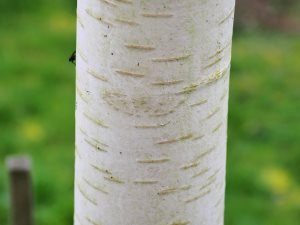
2018 – CHW
To Belvoir Castle to plan further planting in the Carlisle Garden and at Croxton Park around the three lakes.
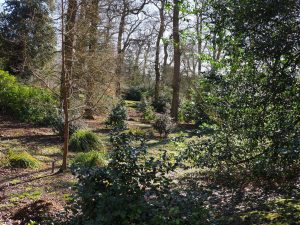
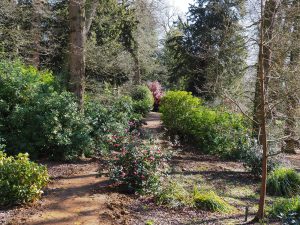
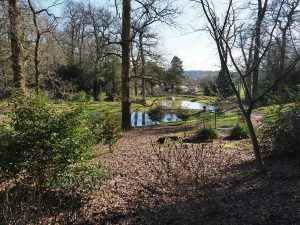
2017 – CHW
Off to the Top Lodge to see what is out or interesting.
Hydrangea ‘Tricolor’ just coming into leaf. The odd yellow new growths will turn pure white but here they contrast nicely with the other leaves which are green edged white.
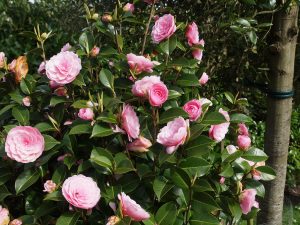
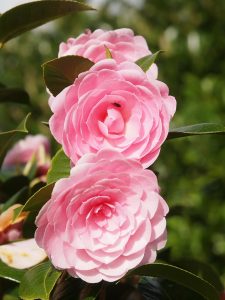
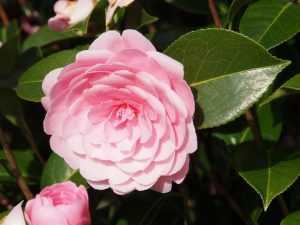
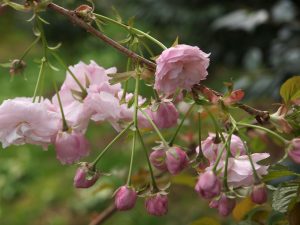
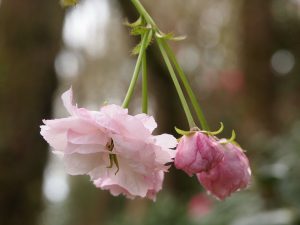
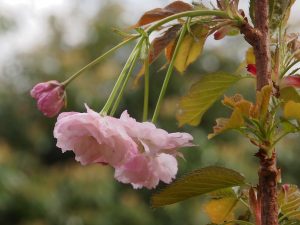
Here is the text of my speech given on the lawn today to nearly 90 guests invited by Christie’s and the Historic Houses Association to the 2016 Garden of the Year award for Caerhays:We were honoured and indeed surprised to have received this prestigious award from the Historic Houses Association and Christie’s. However only a little of the gardening credit can be taken by those of us who are here today.My great grandfather, J C Williams, started gardening here by breeding daffodils in the 1880s. Between 1902 and 1932 JC sponsored, either personally or as part of syndicates, no less than nine expeditions by the great Chinese plant hunter George Forrest. JC also received just as many species of new Chinese plant seeds from Ernest Wilson. It was JC who, with his 50 pre First World War gardeners, grew these plants from seed and created the very informal (some would say chaotic) garden you see here today. Survival of the new Chinese species collected in feudal warzones, where bows and arrows were still weapons, was more important than a grand design plan. Who knew what species of rhododendron, oak, acer or magnolia would survive in our climate and how tall they would eventually grow?JC died in 1939 and my great uncle, Charles Williams, took on. He too was a keen gardener and hybridiser although heavily involved in wartime politics. It is said with great justification that the garden would have been overrun by brambles and neglect if he had not spent all his spare time in the garden with a scythe (probably to avoid his teetotal aunts and the East End evacuees who were occupying the house).My father, who took on the mantle of running Caerhays in 1955, was not initially a gardener. His self taught knowledge and expertise from reference books soon however became considerable and my brother and I were brought up in the garden. In his tenure my father bred around a dozen new magnolias and laid out the start of what today is a national collection of magnolias.The 1960s and 1970s saw many of the Wilson and Forrest Chinese rhododendrons come into their prime. Many soon succumbed to old age and began to die as 60 to 80 years is a fair innings for a rhododendron.There was therefore a risk that Caerhays would become a declining historical museum like a few other Cornish gardens today of similar vintage. Things were brought to an abrupt head by the January 1990 hurricane which destroyed 20-25% of the garden in a day. My father, in retirement, left that day for a lengthy tour of Cornish clubs in Australia. When he returned the mess was cleared and in 1991 a massive replanting and rejuvenation or regeneration plan began which continues today.
The true recipients of this award should however be the Caerhays head gardeners of whom there have been only four since 1895. This is perhaps the secret of Caerhays’ continuous development. Mr Martin, Charles Michael, Philip Tregunna and now since 1996 Jaimie Parsons. All have probably done far more to initiate hybridisation work than my ancestors and they take all the credit for growing the new varieties and planting them out.The next crisis for the garden was sudden oak death or phytophthora ramorum. Dear old Defra told us in 2004 to cut down all our ponticum shelterbelts immediately and sweep all the paths daily. Common sense, thanks to English Heritage, eventually prevailed but we did clear the ponticum over 10 years replacing it with laurel and aucuba. By the law of inverse consequences we actually also then gained space for huge new planting areas.This led us to have the courage to add a 10 acre field into the garden which you will see achieving respectability. Before World War I Old Park and Forty Acres wood were part of the garden. Today they are again after massive clearance work to provide the space for more and more of the now 650 magnolia species and hybrids in the collection as well as a new collection of wild sourced Chinese rhododendron species. So we are still expanding and now have a national collection of podocarpus as well as growing important collections of enkianthus (my passion), styrax and stewartia. Eighty record trees remain in the garden of which the majority are still Chinese originals albeit some on their last legs.You will find the garden, and if I say so myself I do mean it, in very good heart, neater, tidier and more managed than for decades with acres and acres of new planting in the last 20 years. For this Jaimie Parsons and Michael Levett with their team of three (and one retiree who is here today after 48 years’ service) should take ALL the credit.We thank you again, HHA members, for selecting Caerhays for this great national award. My great grandfather, who hated publicity and visitors, would have been horrified and almost certainly would have declined. My father might have too before we opened the gardens fully in 1992. Thank you too to the directors and staff of Christie’s for all their support in making this day possible for us all.And finally thank you to my family for putting up with my gardening mania which I hope they will do more to develop as the years go by. It is in the genes!Thank you!

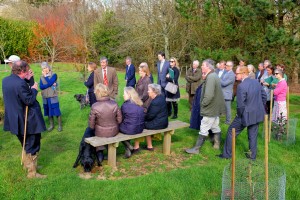
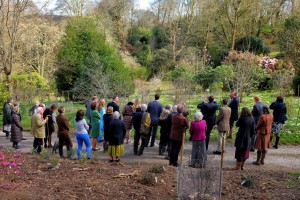
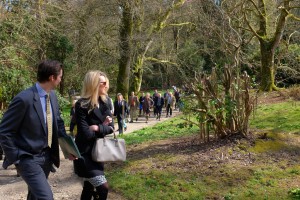
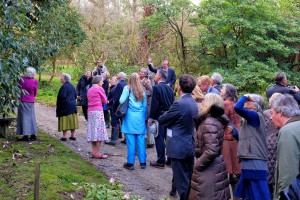
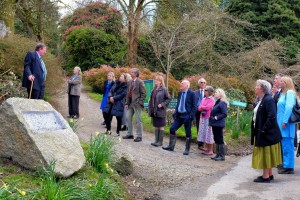
2015 – CHW
Easter Sunday. A quick review of newly flowering magnolias in Kennel Close. All these are three to six years from planting and have just been weeded, re-staked and the wire netting surrounds straightened and heightened on the smaller plants.
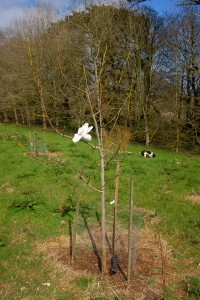
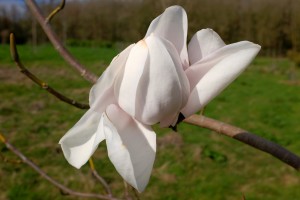
a) One initial but sizeable flower on Magnolia ‘Sir Harold Hillier’ which is an almost pure campbellii alba seedling originally from Chyverton. We have other plants.
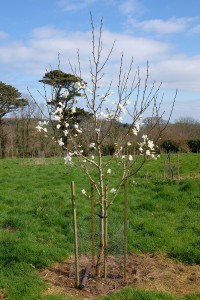
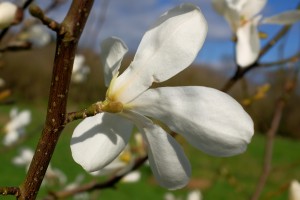
b) First flowering (seen by me anyway) of Magnolia Kobus ‘Octopus’ and Magnolia Kobus ‘White Elegance’. Both look very vigorous but Octopus is the better flower. A bit similar to Magnolia ‘Wodas Memory’ but smaller.
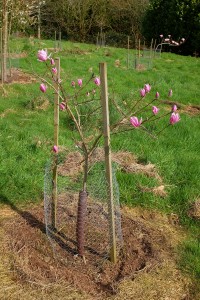
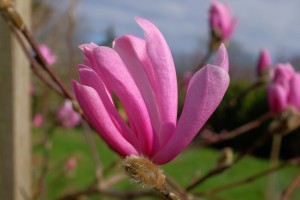
c) Quite the best new thing flowering here is Magnolia ‘Raspberry Fun’. No idea of parentage but I guess Magnolia stellata x Magnolia liliiflora nigra. To check. Ah see here comments by Jim Gardiner on the 10th – sigh!
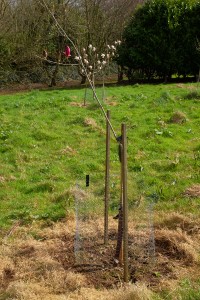
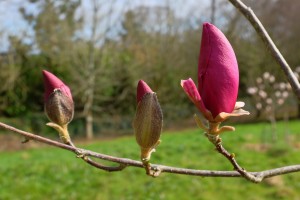
d) Magnolia ‘Black Tulip’ x Magnolia ‘Deep Purple Dream’ has its first three dark flowers. Never seen Dark Purple Dream and Black Tulip not out yet to compare.
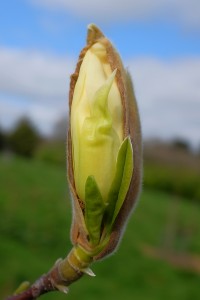
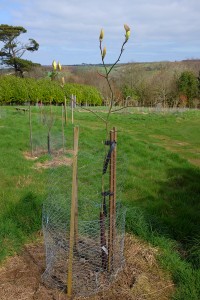
e) Magnolia ‘ Petit Chicon’ is nothing special as yet nor is Magnolia ‘Crystal Chalice’.
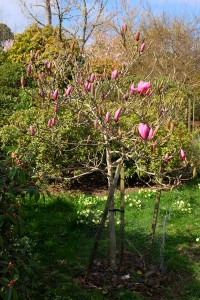
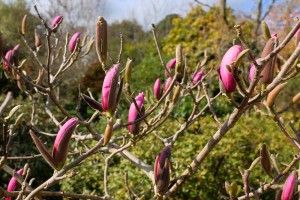
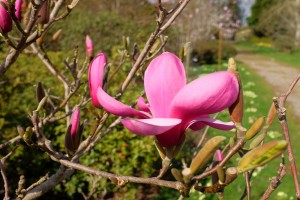
f) Magnolia ‘Yakeo’ is improving with age. A small growing and floriferous plant whose flower buds bend over much.
So onto the drive to review Vance Hooper’s other introductions besides Magnolia ‘Genie’ and Magnolia ‘Brixton Belle’ mentioned earlier as excellent.
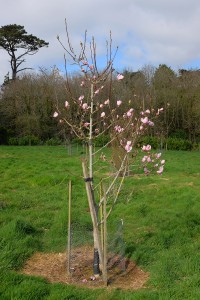
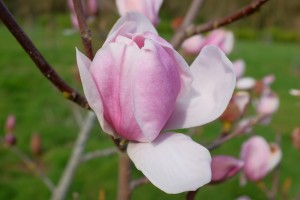
a) Magnolia ‘Plum Pudding’ is a nice shaped cup like Brixton Belle but a rather muddy colour and not one to get too excited about.
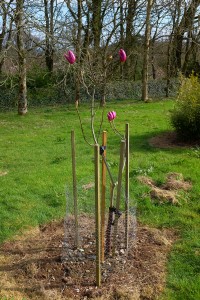
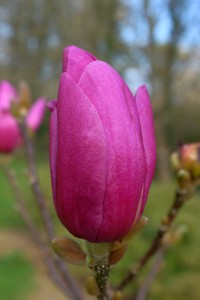
b) Magnolia ‘Cleopatra’, conversely, is a good colour but we need to see it full open to assess the final flower shape. Perhaps 6 or 7 out of 10.
1965 – FJW
Magnolias at their best.
1959 – FJW
G H Johnstone came around for first time since 1957. White magnolia below Sutchuenense hybrids he identified as Mag elongata.
No Maddeni out but reds and early blues. Daffodils well past best. Camellia reticulata at its best but others over except doubles. There has been a lot of hot sun and cold nights. Some hail the last week. Magnolia Diva and saluenensis types mostly over but have been very good.1943 – CW
I counted 17 Maddeni hybrids out in 40 Acres today. Two or three Auklandii out, 8 Michelias in flower, the best going over – Mag nitida has 50 flowers on top. Hard to get enough daffs for House – still a few good flowers on Mag sargetiana. 3 sorts of Peonies in Tin Garden – an iris opening, fuschias still in flower.
1909 – JCW
Later than 1907, only one poet Lulworth and that had a bell gap. Auklandii show no movement. Arboreum x Thomsonii open. Rhodo ‘1875’ is open. Argenteum is nearly at its best.
1907 – JCW
The show at Truro. No good de Graaf, all had been boiled out. No Auklandii’s there. The show was quite five days too soon. Poets were weak, and there were a lot of overcooked flowers.
1906 – JCW
A M W saw the first martin. Cherries coming out, rather like 1902.
1902 – JCW
Three fourths of the de Graafs and Weardale open, a few Lulworths, most of the de Graaf Triandrus that I bought last year, nearly all the Lulworth seedlings, most poets and nearly related hybrids of poets are bad in the [?].
1901 – JCW
Saw the first colour in the grap tulips.




